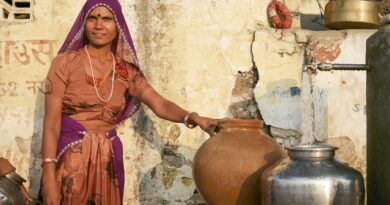Over 40 per cent of water bodies in Ganga basin states dry, eutrophied: Survey

As many as 254 of the 578 water bodies, representing 44 per cent of the Government-owned water bodies in Ganga districts across five main basin states have been found to be dried up or eutrophied in a recent census survey.
The sensus survey found that 324 of the 578 water bodies (56 per cent) were functional across Uttarakhand, Uttar Pradesh, Bihar, West Bengal and Jharkhand while as many 162, or 28 per cent, were dried up and another 92 (16 per cent) of the water bodies had eutrophied. The survey found that 411 water bodies were surrounded by human settlement.
The census was undertaken for the Quality Council of India (QCI), a joint venture of the Government and three premier industry associations – CII, FICCI and Assocham.
The purpose of the study was to do a 100 per cent mapping of all Government-owned water bodies in Ganga districts for improvement and rejuvenation of water bodies which are either dried up or working at less than full efficiency. of the 578 water bodies, 96 per cent were ponds while two per cent each were lakes and kunds.
The ongoing survey saw all water bodies being geo-tagged and their circumference recorded even as all water bodies were given unique identification codes based on a coding algorithm. The survey prokject also incudes setting up an index on parameters such as encroachment, quality and functionality of catchment area, among others.
In the survey, 329 water bodies were assessed in Uttar Pradesh. The survey found that 37 per cent have dried up while another 21 per cent had eutrophied. Only 42 per cent, or 138 water bodies were found to be functional in the state.
The QCI survey found that 93 per cent of the water bodies didn’t have any type of fencing; 53 per cent of functional water bodies were found to be not turbid; 48 per cent of water bodies had solid waste around them, and 69 per cent water bodies have settlements around them. Ghazipur district was found to have the maximum number of functional water while Bhadohi had maximum number of eutrophic water bodies.
In Jharkhand, out of the 53 water bodies assessed, 13 per cent have dried up while 72 per cent were functional, and 15 per cent were eutrophic. About 96 per cent of the water bodies don’t have any type of function while 85 per cent are surrounded by solid waste.
In Bihar, 31 per cent of the 39 water bodies assessed, were found dried up while 31 per cent were eutrophic. Only 38 per cent were functional. In neighbouring West Bengal, of the 147 water bodies assessed, 11 per cent have dried up and 16 per cent were eutrophic but as many as 73 per cent were functional. About 90 per cent of the assested water bodies don’t have any fencing and 63 per cent have solid waste around them.
In Uttarakhand, the team assessed 10 water bodies out of which five had dried up while three were functional and remaining two were eutrophic.

